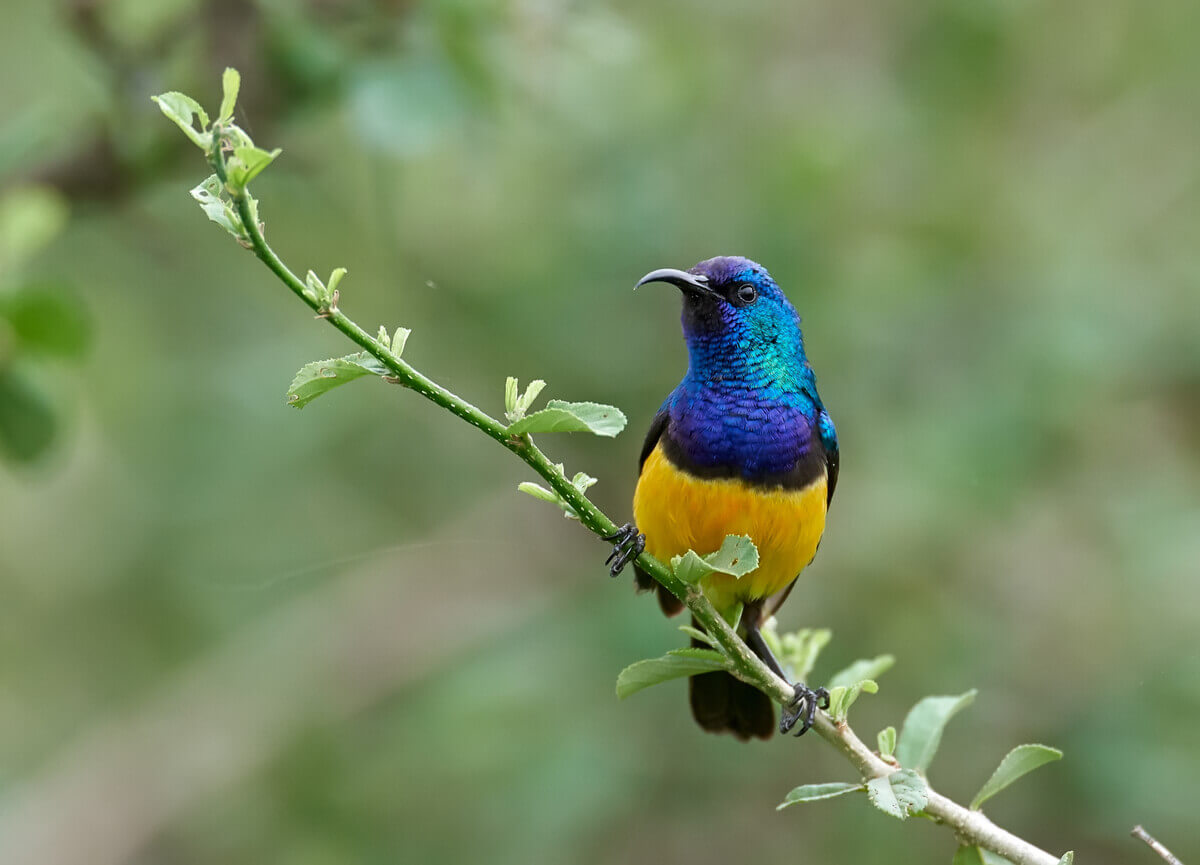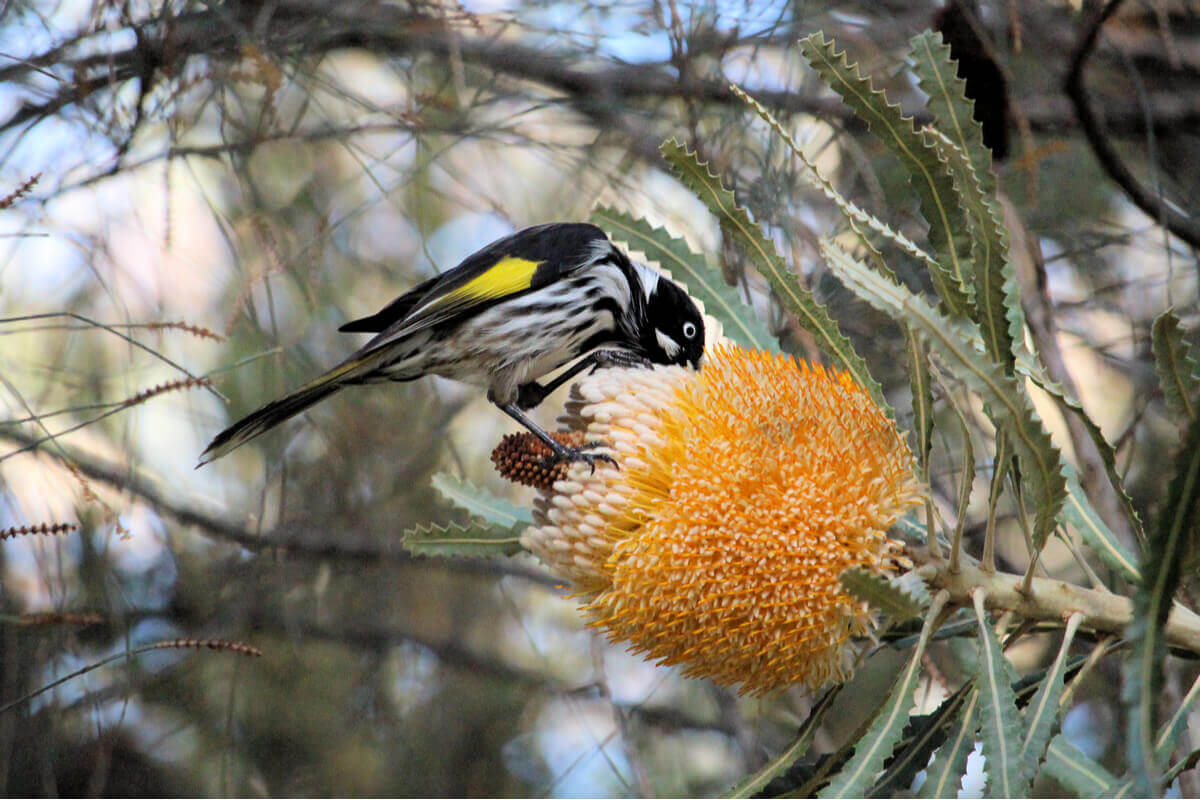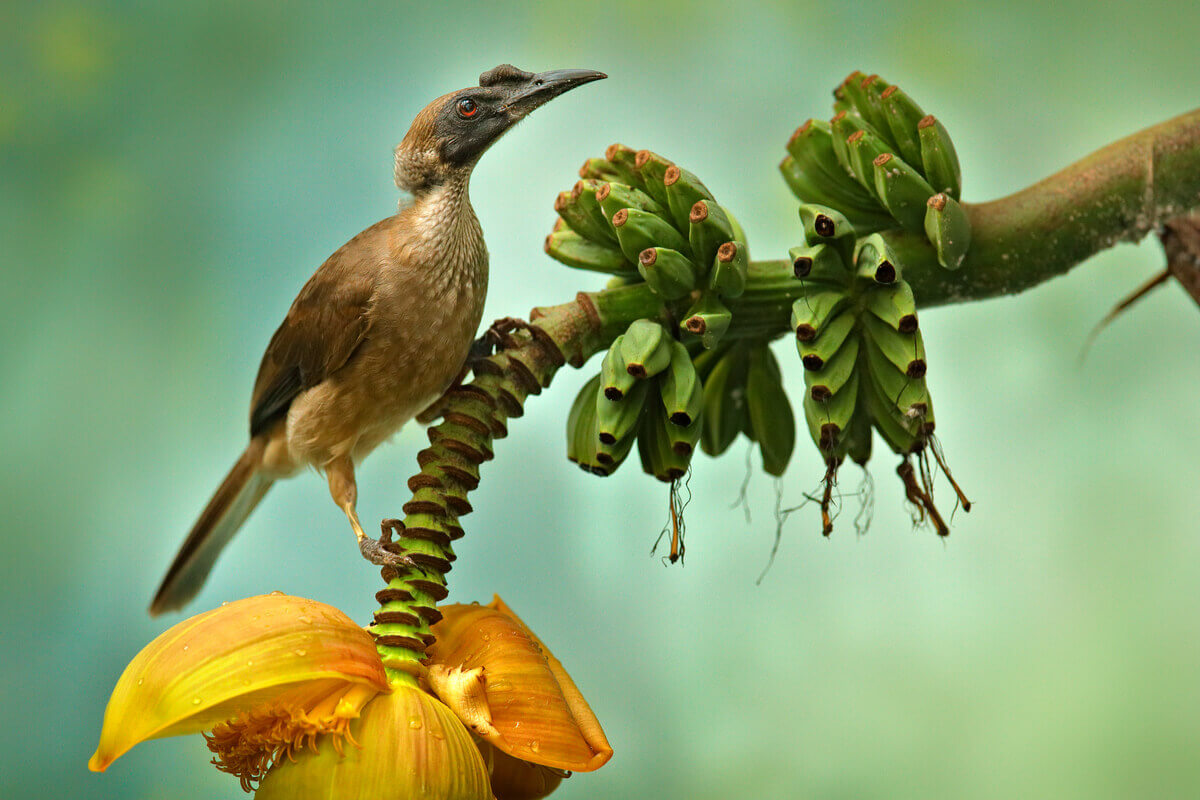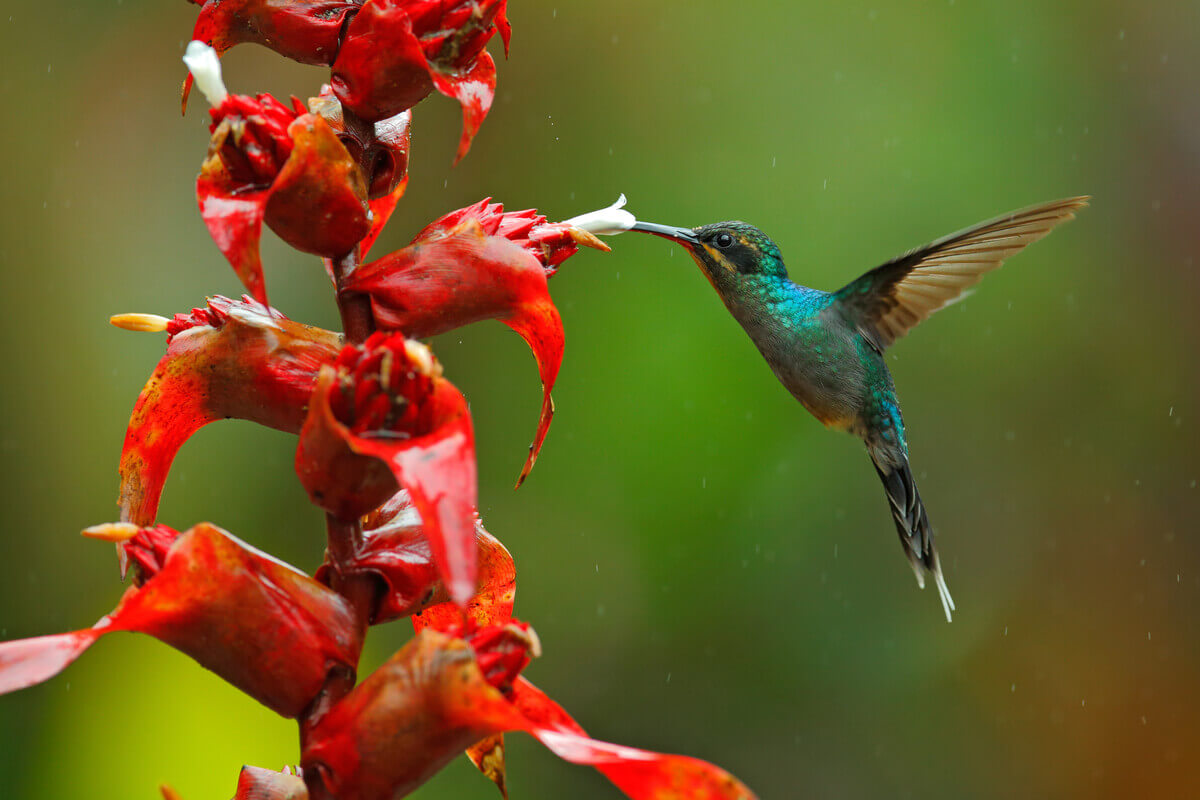5 Nectar-Sucking Birds You May Not Know


Written and verified by the biologist Ana Díaz Maqueda
In the tropical and temperate regions of the planet there are many nectar-sucking or nectar-eating birds. Some of the most representative birds of this group are the sunbirds (Nectariniidae family) in Africa, and the honey eating birds (Meliphagidae family) in Australia.
In the neotropics, or tropical region of the American continent, nectarivory is restricted to birds of the Trochilidae family, also known as hummingbirds. Within this family, there are about 300 different species registered.
However, there are references of other species that don’t belong to this family that also seem to consume nectar. Keep reading to learn more about nectar-sucking birds!
What is nectar?
First of all, to understand the way of life of these curious birds, you need to know what nectar is and why it’s so nutritious for these animals. However, it’s important to emphasize that no bird can depend exclusively on nectar, as it lacks several essential amino acids.
Nectar is a diluted product consisting mainly of sugar, especially sucrose. Sometimes it also contains polysaccharides, amino acids, and lipids. Nectar-producing plants use it exclusively as a strategy to attract pollinators.
Plants that birds pollinate usually have red flowers (the color birds see best) and no odor. When the bird approaches to take the nectar, it catches pollen that it can deposit on the next flower it visits. In this way, they promote the pollination of the plants.
Interesting facts about nectar-sucking birds
As you can guess, nectar-sucking birds are designed to consume this substance as well as to digest it. Just the same, an exclusive nectar diet produces very serious deficiencies in the birds. Therefore, they also need to take small amounts of insects to complete their diet.
- Nectar-eating birds have long, narrow beaks, some of which curve slightly downward.
- The tongue is also usually very long, with protuberances of a different nature. These protuberances increase the surface area and facilitate the extraction of nectar.
- The digestive system of these birds is very short. In addition, the gizzards (the muscular part of the stomach that’s highly developed in granivorous birds) are small and not very muscular.
- Nectar-sucking birds lack the typical intestinal cecum of birds.
- Nectar is quickly digested and produces a large amount of urine. To avoid the loss of electrolytes during the night, some nectar-eating birds put their kidney function on pause.
- To obtain the nutrients that nectar doesn’t provide, these birds spend a portion of their time searching for soft-bodied arthropods.
- Young nectar-sucking birds consume a diet based on arthropods, which changes to a nectar-based diet as they grow and mature.
Nectar-eating bird species
Below, we’ll show you some of the most spectacular nectar-sucking birds, as well as some interesting facts about their origin or way of life.
Malachite sunbird
In Southeast Africa, we find one of the most beautiful nectar-sucking birds, the Malachite sunbird (Nectarinia famous). It belongs to the group of sunbirds that, unlike hummingbirds, perch on the plant to eat.
During the breeding season, the male sunbirds acquire a very bright green-blue coloring under the sun’s rays. In addition, two of its tail feathers grow up to 10 cm (4 inches) in length. It feeds mainly on nectar but also hunts insects.

Variable Sunbird
The variable sunbird (Cinnyris venustus) is another sunbird of the family Nectariniidae. With its bright yellow chest and the rest of its body blue, which changes tone with sunlight, the male variable sunbird attracts potential mates. Females, on the other hand, have a more discreet coloration, although they also have a yellow chest.
They are expert builders of nests, which they place suspended in the branches of trees. Like other nectar-sucking birds, they increase their insect consumption during the breeding season.

New Holland honeyeater
The New Holland honeyeater (Phylidonyris novaehollandiae) is a bird endemic to South Australia. Males and females are very similar to one another, with a black body with a white streak. What’s more, some of their wings are yellow, and their irises are also white.
These birds usually live in large groups in order to avoid predation, although the breeding takes place among monogamous couples. They are not strictly nectar-sucking birds, as they also eat arthropods such as crickets and spiders. In addition, they consume the sugar secreted by some psyllid insects.

One of the strangest nectar-sucking birds: The hornbill friarbird
If the general physical characteristics of nectar-sucking birds are considered exclusively, the hornbill friarbird wouldn’t be included. It inhabits the tropical forests near the coasts of Queensland, Australia.
The hornbill friarbird isn’t a particularly attractive bird. In fact, its head is practically devoid of feathers, which leaves its black skin exposed. As for the rest of its body, it’s covered by a light brown plumage.
The beak is wider than the rest of the nectarivorous bird species and has a bulge that most likely plays some role during courtship.
Like the rest of the birds of this group, it feeds mainly on the nectar of the flowers. Since it doesn’t have feathers on its face, it maintains better hygiene and keeps nectar from sticking to the feathers.

Green hermit
The green hermit (Phaethornis guy) belongs to a subfamily of the Trochilidae family, to which hummingbirds belong. What makes this group different is that they all have an especially curved beak, joined fingers, and especially long tail feathers.
Specifically, the green hermit lives in the humid forests of Colombia, Venezuela, Costa Rica, Ecuador, Panama, and Peru. They live at high altitudes, between 2625 and 6560 feet.
As their name indicates, the feathers that cover the entire body of these birds are green in color. Like hummingbirds, green hermits maintain constant flight while sucking the nectar from the flowers.

The conservation of nectar-sucking birds
In most cases the conservation status of many nectar-feeding species is unknown. They tend to be very elusive, fast, and timid animals.
However, the constant destruction of the environment is damaging their populations. Other significant threats to these birds are habitat fragmentation, forest conversion to crops, road construction, and illegal logging.
It’s important to know that many of these birds have co-evolved with specific plant species. If these disappear, nectar-sucking birds will have nowhere to get their nectar.
All cited sources were thoroughly reviewed by our team to ensure their quality, reliability, currency, and validity. The bibliography of this article was considered reliable and of academic or scientific accuracy.
- BirdLife International. 2016. Phylidonyris novaehollandiae. The IUCN Red List of Threatened Species 2016: e.T22704361A93964734
- BirdLife International. 2018. Nectarinia famosa. The IUCN Red List of Threatened Species 2018: e.T22717979A132114939.
- Estévez Varón, J. V., & Castaño-Villa, G. J. (2014). riQueZa y aBundanCia de aVes fruGíVoras y neCtaríVoras en una PlantaCiÓn de aliso (Alnus acuminata) y un BosQue seCundario en los andes Centrales de ColoMBia. BOLETÍN CIENTÍFICO CENTRO DE MUSEOS MUSEO DE HISTORIA NATURAL Vol. 18 No., 67.
- Miller, R. S. (1937). The Helmeted Friar-bird. Emu-Austral Ornithology, 36(4), 249-253.
- SMITH-RAMÍREZ, C. E. C. I. L. I. A., & Armesto, J. J. (1998). Nectarivoría y polinización por aves en Embothrium coccineum (Proteaceae) en el bosque templado del sur de Chile. Revista Chilena de Historia Natural, 71(1), 51-63.
- undefined. 2018. Cinnyris venustus. The IUCN Red List of Threatened Species 2018: e.T22717826A131882422
This text is provided for informational purposes only and does not replace consultation with a professional. If in doubt, consult your specialist.